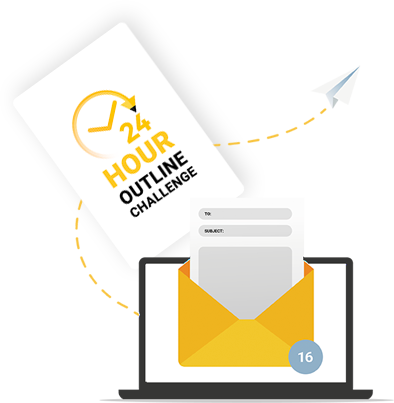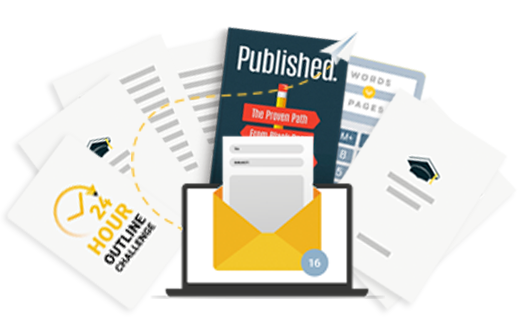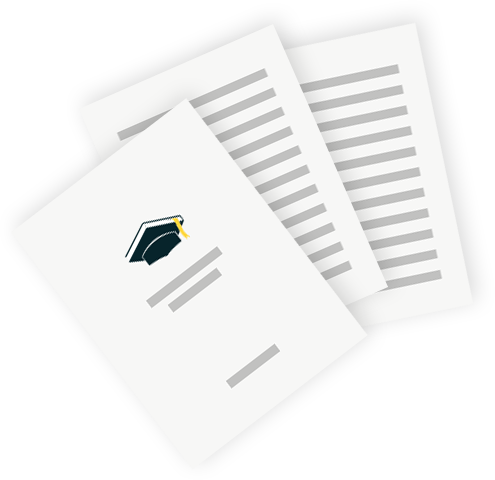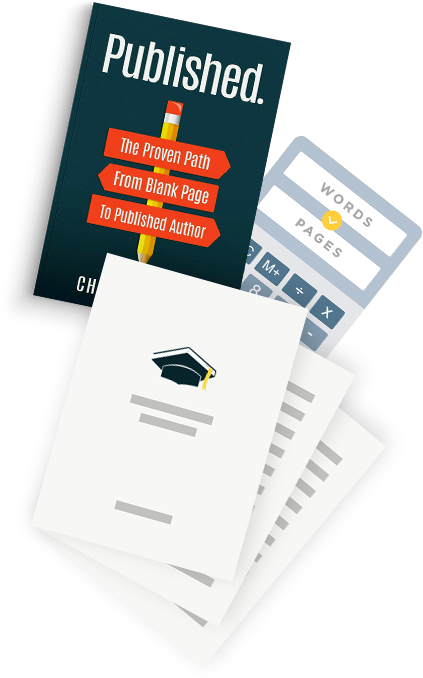When trying to sell your book to a publishing house (or elsewhere), you’ll need a strong book proposal.
While we’re all about self-publishing here (and are convinced you should be too, but you can learn more about that with our self-publishing versus traditional publishing analysis), we see the value of a strong book proposal.
You may want to sell it to a publishing house or you could use it to book speaking engagements, get features on websites to promote your book, and other countless uses.
But if your book proposal isn’t up to par, it can make your publishing ventures that much harder.
Let us simplify it for you in this guide for how to write a book proposal.
Here’s how to write a book proposal:
- Know what your book is about
- Write the book, or at least start it
- Put the right information in the header
- Give a short synopsis
- State your credibility
- Plant the hook
- Reveal the target audience
- Outline your chapters
- Prove your marketablity
- Showcase comparable books
What is a book proposal?
A book proposal is a “pitch” of a nonfiction book used to sell or get the attention of agents and publishers. The purpose of a book proposal is to intrigue publishers while also explaining your book and its marketability to them in order to get them to buy it.
Think of a book proposal as your book’s sales page or letter.
The idea is to not only give them a summary of your book, but to sell them on the idea, how popular the idea and concept could be, and how viable it is in current literary markets.
Book proposals are primarily for nonfiction books looking to make it in the traditional publishing market, but knowing how to write a great book proposal is also important for self-published authors as well, and we’ll get to those details more below.
Self-Publishing VS Traditional Publishing
If you want to learn how to write a book proposal, chances are you’re looking to pursue traditional publishing—meaning working with a publishing house to publish your book.
Now, from what many of our Become a Bestseller program students tell us when they first arrive, many of you might not know that another option exists.
It’s called self-publishing (in case you haven’t got the gist already!).
But you can get a feel for the main differences in the chart below:
| What You Get | Self-Publishing | Traditional Publishing |
|---|---|---|
| Sole control of your book's outcome | ✓ | X |
| Sole control of your book's rights | ✓ | X |
| Control over the story | ✓ | X |
| Control over the cover | ✓ | X |
| 100% of royalties | ✓ | X |
| Editing included | X | ✓ |
| Cover design | X | ✓ |
| Marketing | X | X |
| Deadlines | X | ✓ |
How long is a book proposal?
Your book proposal should be 25 – 50 pages, sometimes exceeding 75 pages depending on how much sample material is included in the proposal itself.
While this seems very long, remember, you are trying to sell your idea to a publisher, and that requires some upfront work—especially when we’re talking about the traditional publishing industry.
Just getting in the doors it a task all in itself.
Step-by-step guide to writing a book proposal
Ready to get into the good stuff? Let’s go through how to write a book proposal that’ll sell your book to a traditional publisher, if that’s the publishing option you want to take.
Step 1 – Know what your book is about
It might seem like a given to at least know what your book’s about before writing the proposal but keep in mind that you really have to know what it’s about, fully and in-depth.
This is why some people even suggest writing the full manuscript or at least starting to write your book before starting the proposal.
The six main areas you need to know about before writing your book proposal are:
- Who’s your audience?
- What message will they walk away with?
- What will you be teaching them or what will impact them the most?
- What will each chapter be like?
- What tone and style will you use (think back to your audience)?
- What examples will you be using to further confirm your message?
We do recommend you have a really, really strong idea as to what your book will cover in full. It makes the process of writing out your entire proposal much, much easier (and stronger).
Step 2 – Write the book, or at least start it
Some publishers will want to see samples, but that’s not the only reason to write part of the book first.
In truth, you have to know what you’re selling in order to sell it well and write a book proposal that’s going to speak loudly about your message.
Most of what we find with our Become a Bestseller students is that they almost always change what their book is about when they get into the thick of it. Meaning, once they start outlining and getting feedback from their coach, a lot of their book changes.
Imagine writing a 25-page (minimum) book proposal only to be left to change almost everything after you start your book?
That would be a huge waste of time.
Step 3 – Put the right information in the header
This is more of a formatting tip, but when you start your proposal, make sure you have the right details in your header.
This is where they’ll know to contact you and honestly, if this part isn’t organized and displayed correctly, they might just ignore your proposal altogether.
After all, not many agents or publishers will want to work with someone who can’t follow basic instructions.
Here’s what you need in your book proposal header for each page:
- Your last name
- Your book title
- Page number
Step 4 – Give a short synopsis of the book’s contents
What would the back of your book say? That’s what you want to put here. But remember, this one can be a little more fleshed out than just a couple paragraphs.
You really want to give a sense of what your book is about, who it’s for, and what they can gain from reading your book.
Keep it strong, and clear.
You can learn how to write a synopsis or book blurb here.
Step 5 – State your credibility
It’s the one time all authors dream of: time to brag about yourself!
This is the section where you’ll basically show off and explain why you’re the person to be writing this book. State some awards, features, and other examples of what makes you credible to share this message.
What publisher are looking for in this section of your book proposal is something unique and interesting that would set you apart from someone else who might have a similar or even the same book idea.
Don’t be afraid to get personal—in fact, do! You have to make sure they. understand that nobody else is the right author for this book.
Focus and dig into what makes your perspective unique and therefore, better and more marketable than others.
Step 6 – Plant the hook
Now it’s your time to make a “big reveal” about what makes this book so unique and sellable.
What’s the hook?
What is the #1 thing that will get readers to buy, review, and love your book? In essence, this is the real selling point of your story!
Make it important, impactful, and most importantly: make it speak to them emotionally as well as in a light where they can see how it can be marketed.
Step 7 – Reveal the target audience
Who is this book for? You should be able to paint a really clear picture about who they are, what their needs are, and even what type of language they would use.
This should be direct, and the market for this audience should be wide.
This doesn’t need to be very long, but show them you have a strong understanding of the readers you’re speaking to, their age range, and why they’ll want to read your book.
Step 8 – Outline your chapters
This is best with a sample chapter or two!
You should start with your book introduction, and move on to chapter one and possibly two.
After that, provide a fairly comprehensive chapter outline, including what each chapter is about, some examples you’ll use, and other details specific to your book.
You can even offer what the reader will learn specifically in each to help give the publisher an overview of the true contents of the book.
Step 9 – Prove your marketability
Here’s where you’ll want to put in the research and pull some stats into play. You really want the publisher to realize just how much your book will sell.
Some important things to include here might be some search history for your topic, a blog or website you have and the website traffic, and any other information proving that your book will be easy and lucrative to market.
Step 10 – Showcase comparable books
While you usually want a publisher to think your book is 100% unique and nobody’s ever done it before, this is actually the wrong way to think about it. Reason being…they want proof of concept.
They want to know that your book will sell.
So while no book can ever be exactly like yours, they want to know a concept similar to yours has succeeded, and done well.
This is your time to convince them that your book’s idea is almost like another book that did really well. Make sure to put down some statistics if you can!
Show them this idea has value and that it will speak to people so loudly, they’ll have to buy.
Writing a book proposal takes a lot of work, and it doesn’t even include what’s needed to find an agent before publishers can see this proposal.
While there are advantages of a traditional publishing book deal for some, it’s not right for the large majority of people.
That said, we hope this helps you write your proposal if you do choose to go this route!




